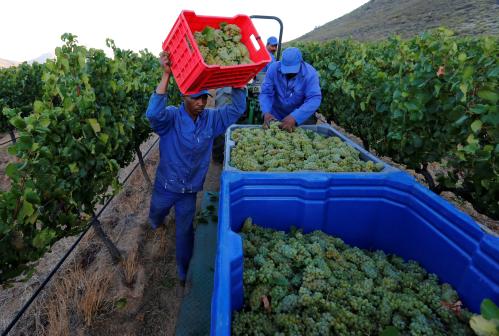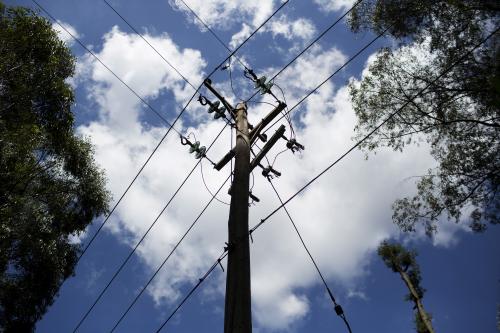The more things change, the more they stay the same. For the nearly 860 million people living without electricity, the technologies and business options for delivering access have grown a lot. Yet a wide gap remains between the cost of providing last-mile electricity and what poorer folks are able to pay. It’s the same challenge that every country has faced since President Roosevelt established the world’s first Rural Electrification Administration in 1935. Achieving universal access by 2030 requires leveraging the technologies that are transforming energy: solar power, batteries, the internet of things, and energy efficiency. But this won’t be enough. We will also have to apply the lessons learned from public finance in the energy sector.
Rural electricity access has historically been costly and required subsidy
Duke University’s Energy Access Project, in collaboration with the Energy Access team at CrossBoundary Group, looked at the experiences of seven countries that have made great strides in bringing electricity to their rural populations: Brazil, Chile, Laos, Peru, South Africa, Thailand, and Tunisia. Despite widely different circumstances and initial electrification rates, there are important similarities. Two stood out: the costs of such programs and the role of subsidies in facilitating last-mile connections (Figure 1).
- Rural electrification programs are costly. Programs examined had an average cost of over $1,500 per connection. This is consistent with research that has found national utility connection costs often exceed $2,000 in rural areas.
- Rural households received subsidies between 70 and 100 percent of connection costs. Connection costs surpass the income of many rural households, so governments step in to fund a big share of the capital costs for electricity connections. For the cases we examined, customers paid an average of $210 per connection, and the average subsidy was nearly $1,300 per connection or 86 percent of total costs. In some cases, households paid nothing to be connected.
Off-grid solutions are here. The affordability problems never left.
The vast majority of the planet’s 6 billion electricity consumers got their access from the grid—including in the seven countries examined in the Duke University report. All too often, the inertia of a grid paradigm leads to the perception that off-grid systems are too expensive to serve poor rural communities. The reality is that off-grid will be the least-cost option for an estimated 71 percent of future connections in rural areas. But in the same way that grid expansion could not have proceeded historically without massive public subsidies, scaling up off-grid to the levels needed won’t happen without addressing affordability and, by extension, public subsidies.
This is because technology options and models for reaching people without power have grown but the underlying economic conditions of the rural poor have largely not. The GDP per capita today in Kenya—a country doing better than most in sub-Saharan Africa—is still less than the United States in 1913 (adjusted for inflation and purchasing power parity). It’s been estimated that at current retail tariffs, it would take Kenya’s power utility 44 years to recover the costs of connecting its rural customers. While solar home systems on pay-as-you go financing have facilitated new access for millions, the ability to pay for a deposit or up-front connection fee is simply beyond the means of hundreds of millions of people currently lacking access. Payment plans for systems that support a basic set of appliances like lights, TVs and fridges are typically over $1 a day. Without subsidies, it will be a long time until the 420 million people in Africa who earn less than $1.90 a day can afford lights, TV, and a fridge at that price. (Note the $1 per day system cost and $1.90 per day income are not directly comparable, as the former is an approximation of system costs based on market exchange rates while the latter is in purchasing power parity terms.)
We see parallels across time in critical aspects of electricity system financial planning like population density and household incomes. The higher the density of the population, the less expensive it is per household to expand access through any mode because of economies of scale in distribution. Figures 2 and 3 compare our seven historic case studies with seven African and Asian countries facing access deficits today. The case countries had lower population densities, suggesting that countries such as Ethiopia and Cambodia may be able to reach their rural populations at lower average costs during analogous periods of their electrification journey.
However, the subsidy required to reach low-income populations is also driven by the ability to pay for a connection. Using GDP per capita as a very rough gauge of what rural consumers are able to pay for connections, Figure 2 illustrates how some countries facing access challenges in 2020 have lower incomes than those included in the study. This means that even with denser, easier to reach populations, these countries will need connection subsidies to bridge affordability gaps.
Smart energy-access subsidies mobilize the private sector
The greatest change in rural electrification of the last decade may be the emergence of the private sector in providing off-grid service. With it has come questions, even controversy, over how and whether to adapt the long-standing financing and subsidy approach for state-owned utilities to privately owned off-grid companies. That model, which has worked for rural electrification—subsidy and concessionary loans from governments and development banks to support large generation, transmission, and distribution projects led by public utilities—can be opened up to bring in the private sector. Results-based financing (RBF) subsidy programs that pay companies for the delivery of specific energy services can effectively attract private sector companies and mobilize investment.
In Togo, the solar home system company BBOXX is reaching more remote customers using a subsidy from the Togolese government of $4/month per customer. In Nigeria, 580 mini-grids are being developed on the back of a World Bank RBF program that provides developers a one-time payment of $350 for each connection. Even in more expensive markets lacking that scale, the World Bank estimates the subsidy needed for mini-grids is $400-900 per connection. All these options are less than the $1,300 average subsidy deployed for grid expansion in the historic case countries.
New RBF models bring healthy competition to rural electrification efforts. Damilola Ogunbiyi, CEO of Sustainable Energy for All and former head of Nigeria’s Rural Electrification Agency says, “A paradigm shift to results-based financing models can help put the world on track to achieve universal electrification. That is why we’ve created the Universal Energy Facility—a multi-donor results-based financing facility that will provide incentive payments to eligible organizations that deploy energy solutions and provide verified end-user energy connections to significantly speed up and scale up energy access across Africa.” The new Universal Energy Facility will be launched by Sustainable Energy for All and key partners later this year.
Subsidies have always played a critical role in addressing high rural electrification costs and bringing power to many of the 6 billion people who enjoy the benefits of electricity today. New technologies, and new ways of mobilizing the private sector mean the amount of subsidy needed may be lower than ever before. But today, as always, there is no getting around the fact that rural electrification requires significant subsidies. The question is how best to provide them.












Commentary
An off-grid energy future requires learning from the past
May 4, 2020